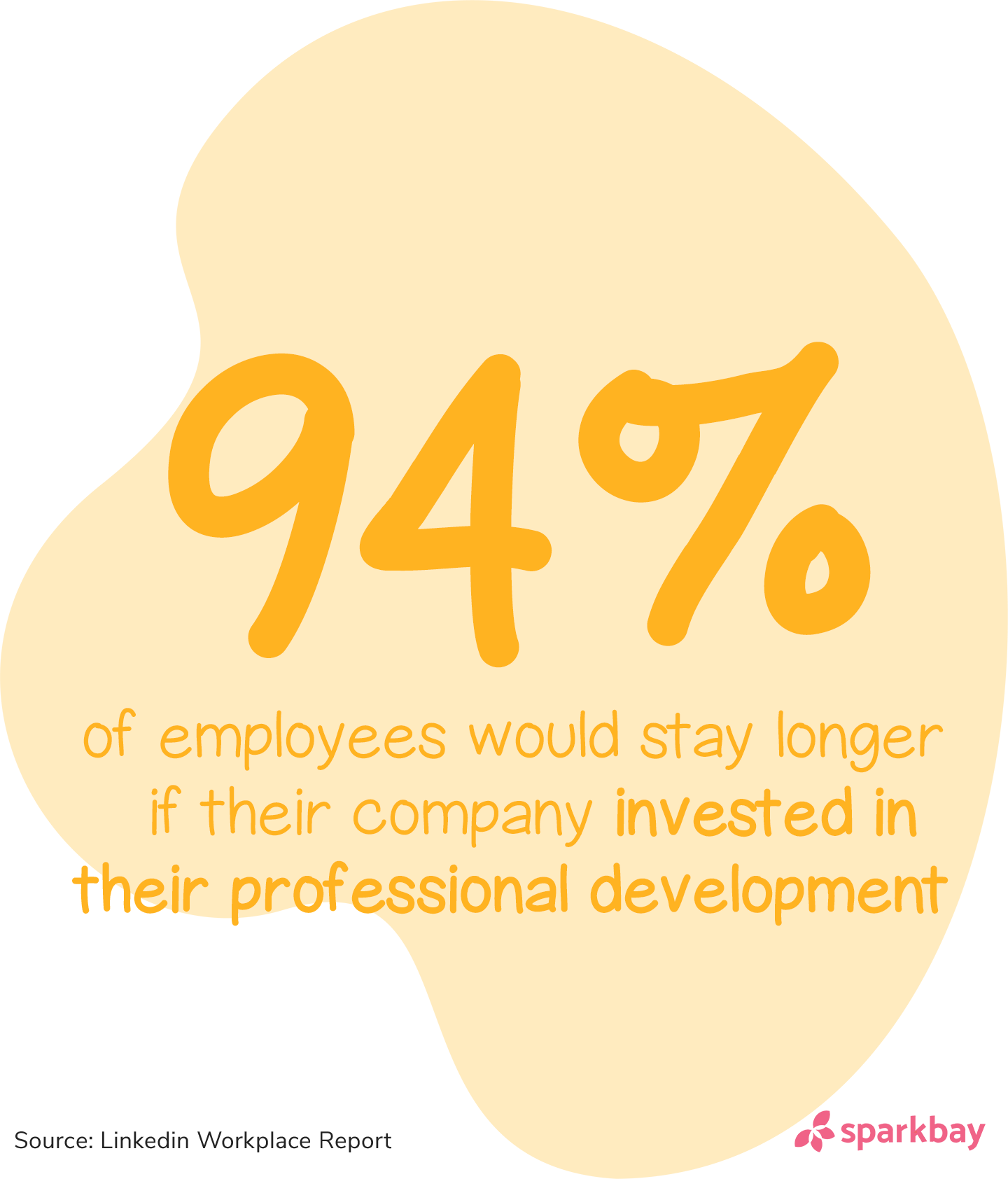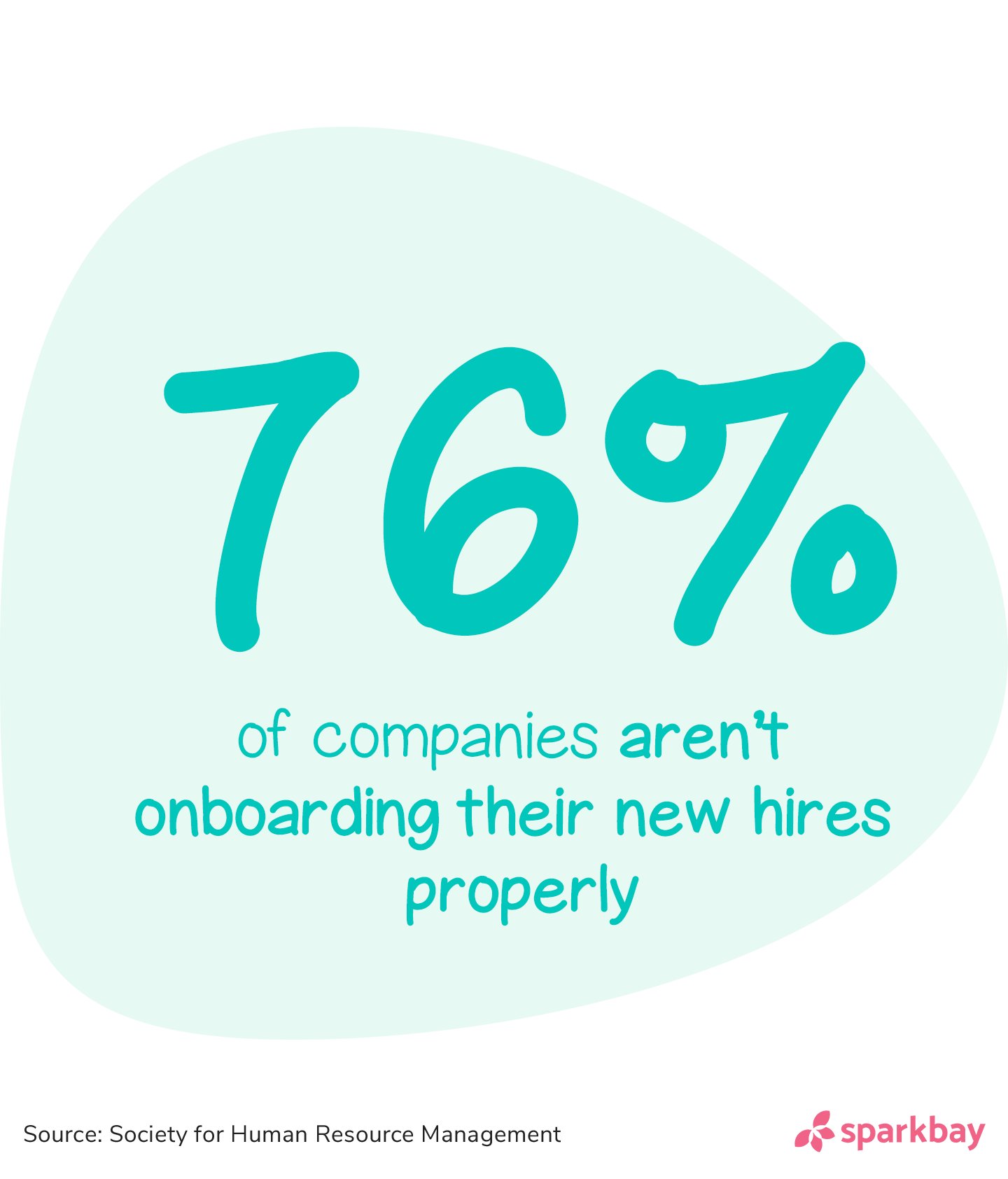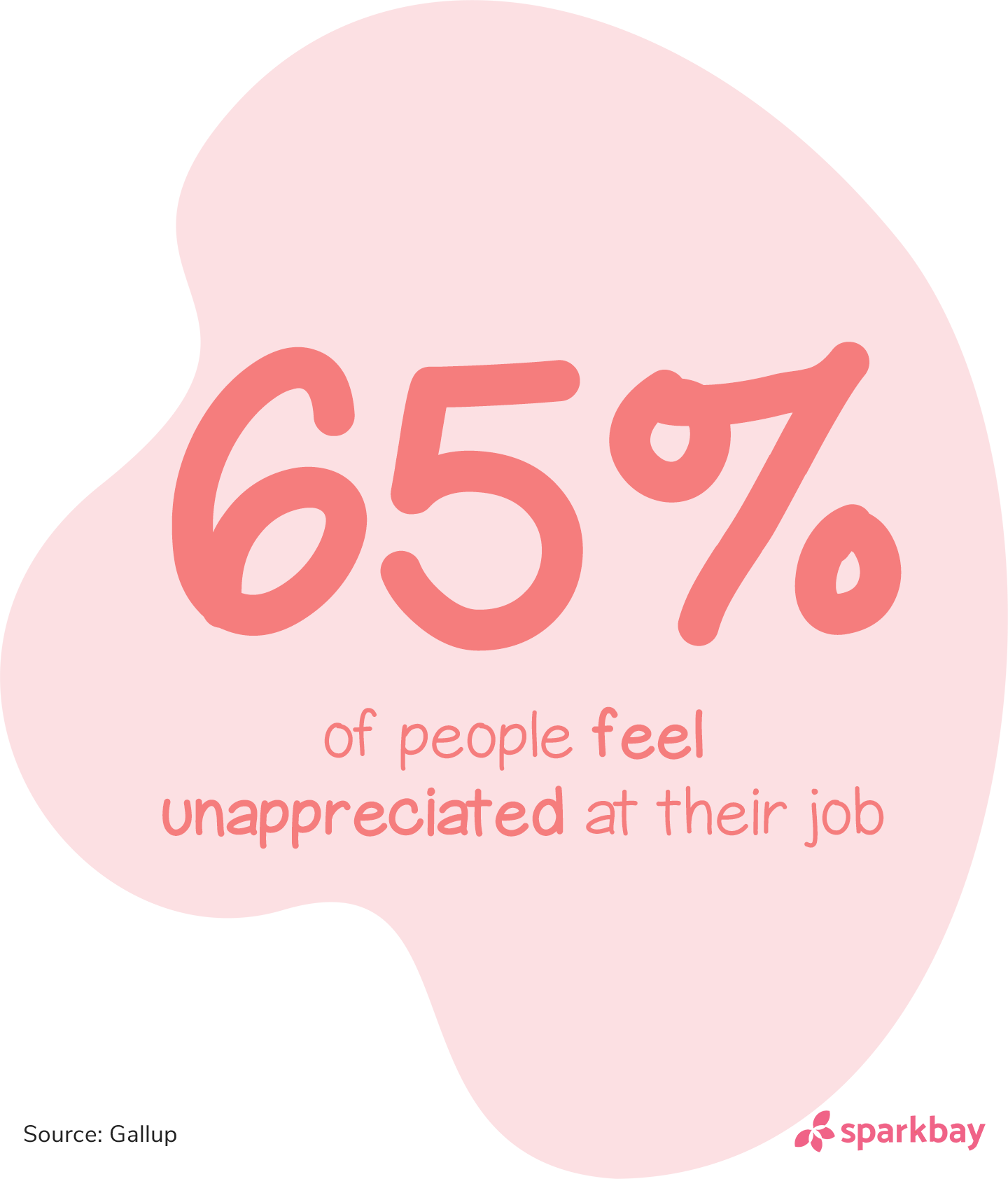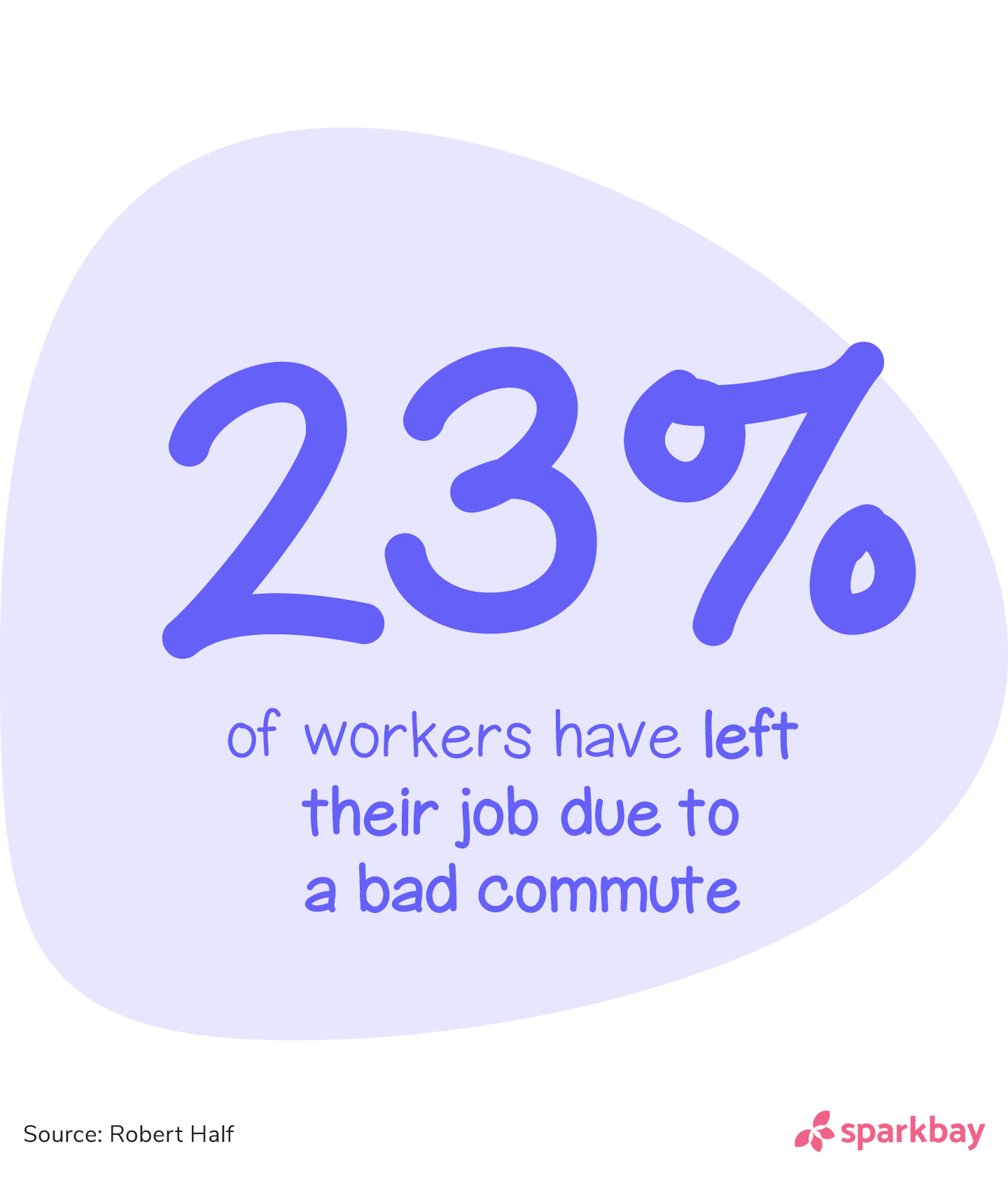Wouldn't it be nice if the word turnover only referred to a small pie?
The reality for HR leaders isn't so sweet.
47% of HR professionals said employee retention was the top talent management challenge they faced, closely followed by recruitment at 36%.
It's no surprise that these two are linked: It's much less expensive to retain a productive employee than it is to recruit one.
But what can you do?
It'd be nice to increase everyone's salary, but that isn't happening anytime soon.
And those competitors with the money to lure away your best candidates aren't making things any easier.
The average compensation increase for an employee who takes another job is 15%. And chances are slim those workers will get that kind of pay bump in their current role without a promotion.
The good news is that while salary plays a role in employee engagement, it isn't the star player.
Employee retention relies on a combination of factors, including flexible work arrangements, benefits, professional development opportunities, advancement opportunities, company culture, and more.
To help you round out your employee retention program, we've put together a list of the top causes of employee turnover and a detailed plan for how to address them.
8 Proven Employee Retention Strategies in 2026:
- 1. Create professional development opportunities
- 2. Make sure managers are not compelling great employees to leave
- 3. Create career advancement opportunities
- 4. Improve the onboarding process
- 5. Monitor turnover risks
- 6. Make sure your employees are appreciated and recognized
- 7. Make sure your employees don't feel overworked and overwhelmed
- 8. Create flexible working arrangements

1. Create professional development opportunities
94% of employees surveyed by LinkedIn for its annual Workplace Learning Report said they would stay at a company longer if it invested in their professional development.
Losing employees due to minimal learning opportunities is one of the worst kinds of employee turnover.
Why?
Because employees who seek additional learning opportunities are curious people, and curious people make for better employees.
These workers are engaged and sharp.
They're the people most likely to jump into a challenge with both feet and think of creative solutions.
If they lack stimulation, they'll feed their curiosity elsewhere.
Businesses that don't provide these internal training opportunities miss out on an exciting opportunity to address the global skills shortage.
75% of employers who report recruiting difficulties say it's challenging to find candidates with the skills they need.
To compensate, many companies are offering internal training opportunities to upskill their existing workforce.
Of course, this employee retention strategy is most successful with curious, motivated employees.
Sparkbay makes it easy to go to one spot and have a bird's eye view of what's happening. Each manager can pinpoint the goods and where to improve.
How NARS reduced turnover by 10% with Sparkbay
How you can do that:
The simple answer: You need a learning and development program.
The complicated answer: You need an effective learning and development program.
But what does this mean?
It means you can't just throw a program together overnight and consider the problem solved.
Keep in mind that 90% of companies offer digital learning today, so it's not that professional development opportunities don't exist. It's that they aren't designed properly.
Just because you've identified the desire for learning and development within your company, doesn't mean your workers will settle for anything.
It's essential to understand how your employees prefer to learn and design carefully structured professional development opportunities.
Corporate learning tech is a popular tool among HR teams. They allow companies to easily deliver educational content at scale.
But do employees actually use these?
Clunky systems tempt employees to look outside the organization for more consumer-friendly tools like Coursera, Udacity, and even YouTube.
As a result, employees forget that corporate solutions exist or don't associate their company with employee development initiatives at all.
Understand the learning preferences of your employees.
For instance, LinkedIn found that 68% of employees prefer to learn at work, while 58% of employees prefer to learn at their own pace.
It's data points like this that can help you make critical decisions like which e-learning tool to choose, and how often to offer workshops.
Another option is to provide tuition assistance.
Your organization may not be equipped to offer in-house training, but you can support your employees by subsidizing their education.
This tuition can either be limited to specific courses and credentials valuable to your organization or unrestricted.
2. Make sure managers are not compelling great employees to leave
You've likely heard the expression, "People leave managers, not companies."
Management affects how engaged employees are, and therefore, how likely they are to stay at your company.
The single biggest decision you make in your job -- bigger than all of the rest -- is who you name manager. When you name the wrong person manager, nothing fixes that bad decision. Not compensation, not benefits -- nothing.
But let's dig a little deeper.
What exactly don't employees like about their managers?
There are blatant transgressions like playing favorites, making inappropriate advances, or making informal threats.
But there are also more subtle reasons an employee leaves their manager.
They can range from feeling a lack of development opportunities to not feeling appreciated to feeling micromanaged.
How can you and your managers pinpoint the biggest pain points for employees and proactively address them?
What can you do about that?
You don't have to be a mind reader to know your talent's true intent. You can figure out how your employees feel by collecting feedback regularly.
An annual review is not enough. Great people leaders regularly collect feedback from their employees. Try to schedule monthly or biweekly touch points with your employees.
If possible, use anonymous feedback tools to make your people feel at ease.
Make it clear that this is a safe space for your people to share their honest opinion.
Be mindful of how you react to employee feedback. This will determine whether they feel comfortable sharing feedback moving forward.
This is your opportunity to focus your efforts:
If your employees feel like they aren't appreciated, you can work on acknowledging their efforts.
If they feel like there are no clear advancement opportunities, it's time to figure out a clear career progression path.
Above all, be sure to act on your employees' concerns on time.
If you take too long, they may view it as a sign that their concerns are not a priority and that it's time to explore other career opportunities.
3. Create career advancement opportunities
Good employees want to advance in their career. They are motivated by the prospect of promotions, and the chance to take on more challenging work.
Employees who remain in the same role for an extended period are more likely to leave an organization.
In fact, for every 10 months an employee stays in a position, their chances of quitting increase by 1%.
For many companies, policies about the frequency and nature of promotions as well as other contributing factors impact whether they can offer promotions or not.
Even if an employee deserves more responsibilities, their employer may be unable to provide it.
Often, these circumstances aren't communicated to employees, or if they are, they're perceived as stall tactics. In response, these employees start looking for opportunities elsewhere.
How can you combat the issue of employee stagnation and reduce its impact on employee retention?
Don’t make management the only ladder employees can climb
There is a misconception in business culture that people management is the only way to advance one’s career.
You can create a dual-track career path like Microsoft and Google.
Contributor |
People manager |
|
Expert |
C-Level |
|
Senior role |
VP |
|
Advanced role |
Director |
|
Mid-level role |
Mid-Level Manager |
|
Early-level role |
New Manager |
|
Junior Role |
|
At each level of the career ladder, people in these roles hold equivalent pay, similar levels of influence and equivalent levels of expectations.
In that structure, a junior employee starts out as an entry-level contributor.
But as they gain skills and prove their effectiveness, they can move up the ladder of promotions, benefits, and influence without ever becoming a people manager.
This helps you retain high-quality talent, prepare them to serve as mentors, and benefit from their expertise.
All of this, without demanding that they get good at people-management skills, which may not fit with their talents.
Of course, if you have vacant manager positions — and an employee has the necessary leadership and people-management skills — don’t wait simply because the employee isn’t up for a promotion yet.

4. Improve the onboarding process
Imagine going through the highly expensive process of recruiting a new employee only to lose them within the first two months.
You hired the person, so it means that they possessed the skills required to get the job done. And they likely checked out with a range of stakeholders during the interview process.
Losing a new employee potentially points to a poor onboarding process.
76% of respondents' workplaces aren't onboarding their new hires properly, while only 47 % believed their onboarding program effectively retained new employees.
When there's no onboarding process at all, there's a higher employee turnover rate and lower productivity levels.
How you can improve onboarding:
The key to a successful onboarding process is capturing a new employee's excitement about starting a new job while minimizing other challenges.
When people start a new job, they're eager to learn and start generating value.
But frustrations around how to do something as small as print to what the expectations are for the first month can lead to uncertainty and anxiety.
So what should your onboarding program deliver?
For starters, don't go radio silent during the gray period between receiving the signed offer and greeting the new hire on their start date.
Why?
Because this presents an opportunity for competitors to snatch up employees who may have doubts about their new role.
Create a program that's about integrating new hires into the company culture.
It shouldn't just be a guided paperwork session.
In fact, 40% of onboarding activities consist of filling out paperwork.
Ahead of it on the list were activities like reviewing regulations or listening to an overview of the company.
It's also essential to signal the importance of employee onboarding activities from the top down.
The top reason onboarding activities don't get completed is that managers don't have time to carry them out. It's fair to say that were it mandatory, managers would make the time.
Too often, it's considered a throwaway responsibility that can be sacrificed at the altar of business-as-usual activities.
5. Monitor turnover risks
Employee retention isn't something that you build and then stop working on.
You have to be in constant communication with your employees to make sure their expectations are met and they're currently happy at your organization.
This is especially true during times of change.
Here's how we can help you improve employee retention:
Our platform automatically surveys your employees at regular intervals (70% of our clients opt for monthly surveys).
Using this data Sparkbay captures trends and alerts you in real-time when an employee segment shows an increased risk of turnover.

Sparkbay also uses data from recently departed employees to uncover the real causes behind turnover, empowering you to take early action and address the issues that matter before it’s too late.
We also created a library of easy-to-implement actions from the most successful organizations to help you and your team managers learn how to prevent turnover.
If you're interested in learning how Sparkbay can help you retain your talent, you can click here for a demo.

6. Make sure your employees are appreciated and recognized
A sobering 66% of employees say they would quit their job if they felt unappreciated. According to one Gallup poll, 65% of people feel unappreciated at their job.
Meanwhile, another study discovered that the office comes in last on the list of places where people express gratitude. Side by side, those statistics indicate there's a lot of work to do.
One potential cause for this disconnect is "emotional stinginess". Whether it's due to their professional development or their personal temperament, some managers don't show gratitude, which leaves their employees feeling underappreciated.
Add overworked employees under a lot of pressure, and you've got a recipe for turnover.
What are some of the warning signs that your employees feel undervalued?
They're suddenly withdrawn.
They're no longer enthusiastic about new projects or company initiatives.
They come to work "checked-out" (otherwise known as the art of doing the bare minimum).
How you can improve employee recognition:
To succeed, your employee appreciation initiatives need to be consistent, sincere, and organic.
A few common mistakes HR leaders make when trying to improve recognition are:
- Thanking people on autopilot by going around at the end of each day to thank everyone on the team one by one
- Overcompensating by making a dramatic shift from never thanking anyone to suddenly thanking everyone for everything
- Delivering conditional thank yous that are closely followed by a negative comment
If you want to improve employee appreciation, you need to build a culture of recognition rather than trying to gamify the process through a point system.
Invite managers and employees to write personal notes to their colleagues recognizing what they did well and explaining why it was important.
Present the recognition publicly either during in-person events or on internal networks that allow you to broadcast a colleague's accomplishments.
And create annual awards where recognized employees are honored in front of their peers and senior management.
Above all, make sure to celebrate and reward behaviors the company wants to encourage as part of its company culture.
7. Make sure your employees don't feel overworked and overwhelmed
If someone told you that working at Company A would reduce your life expectancy by even 1%, you'd likely take a job somewhere else.
Researchers from Harvard and Stanford found that long hours decrease a person's life expectancy by roughly 20%.
Given the demand for talented workers and a renewed cultural focus on health and wellness, few workers are willing to tolerate such conditions.
A report from Morneau Shepell found that 40% of managers and 34% of employees suffer from "extreme levels of stress".
Overworking employees is a short-term strategy that isn't worth the long-term pain.
What's more, overworking employees simply isn't a smart management strategy.
Research shows that after a certain point, productivity declines for every additional hour.
Moreover, employees who are stressed and overworked fall ill more frequently and make expensive mistakes.
It's an untenable environment.
Sure, there may be short-term wins in the form of completed projects.
But over time it hurts employee job satisfaction and eats into a company's recruitment and retention costs as burnt-out employees leave and share their experience with other candidates.
How you can do that:
Sometimes, pulling a few extra hours is necessary, but how often is too often?
There are a few revealing signs that your employees are overworked.
If your keycards system logs people leaving late at night or clocking in shortly after sunrise, it's a sign that their workload may be too high.
Another warning sign is hearing employees lament about missing family events.
That one's no joke. According to that joint Harvard-Stanford research mentioned earlier, work-family conflicts increase the chances of poor physical health by 90%.
The most overlooked, but helpful, employee retention strategy is to facilitate an open manager-direct report dialogue.
Often, good employees don't want to admit they're overworked either due to embarrassment or the need to please.
When it becomes too much, their solution is to find a new role elsewhere, which is the least optimal outcome for your company.
Such a dialogue provides an environment for workers to speak freely about their workload and to request the support they need.
In some cases, a manager may not be aware that an employee's overworked - because they're overworked themselves.
Another employee retention strategy is to encourage workers to take time off.
Employees often feel pressured not to take vacation time either because of their workload or fear of being overlooked for interesting assignments when they return.
Creating an atmosphere in which managers encourage employees to use their unused paid time off creates opportunities for guilt-free rest and relaxation.
Finally, it may be time to increase headcount or radically prioritize.
If asking employees to sacrifice their weekends is the only way to keep the company operational, it's time for a re-evaluation.
You may need to hire more people. And if hiring simply isn't an option, then it's time for some radical re-prioritization of tasks on a team's docket.

8. Create flexible working arrangements
In some professions, there's an expectation that employees will be available 24/7.
This expectation freezes out many people who would otherwise bring all the skills these organizations require.
These demands to be physically present at set hours can lead to a drain of talent and resources over time.
Especially when people working from home are as productive as those who remain at the office.
Remote working also reduces one of the biggest pain point of coming into the office: commuting. 23% of workers have quit their job because of a bad commute.
What can you do about that?
Business leaders should embrace remote working and flexible hours.
This isn't possible in some industries where front-of-line staff is required at all times for customer service.
But if your employees work in terms of deliverables, not face time, let them decide where they work best.
One financial services company lets any employee leave as early, arrive as late, and work from home as often as they like with no questions asked. So long as their work gets done.
If you can't take things that far, consider conditional flexibility.
For instance, the ability to work from home two days a week with the option to switch those days each week.
And offering flexible hours allows people to create a work schedule that works for them.
What's better?
An employee who works only from 9 to 5, or an employee who works evenings and weekends but takes the liberty of leaving at 3:30 so they can pick up their kid before remote working for the rest of the night?
Give your employees a little leeway, and they'll give you a lot of loyalty.
What's more, this employee retention strategy will improve your recruitment efforts since flexible work arrangements allow you to access a new pool of highly qualified candidates.
Final thoughts: You don't always need to pay more, you may just need to pay attention
Without question, money retains people, but it's not the only way to retain employees.
In fact, sometimes it's a Band-Aid solution to a deeper problem.
Anyone who's ever accepted a counteroffer only to quickly regret their decision can attest to this.
Employees want to be appreciated, they want to continuously learn, and they want to know that there's room to grow within their current organization.
And when they notice they can't receive these things within their current role, they look elsewhere.
Keeping your current employees happy and job satisfaction high is a much smarter employee retention strategy.
You avoid high recruitment costs.
You retain valuable knowledge that even an excellent new hire can't replace.
And you also protect your employer brand by ensuring people who do leave the organization only have good things to say
If you're interested in learning how Sparkbay can help you retain your talent, you can click here for a demo.

